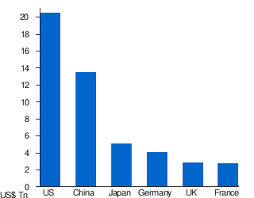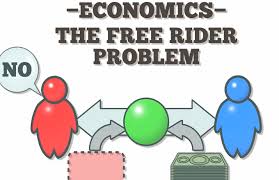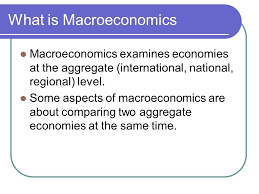
Heyne’s claim on the relation of value and economics
The implications of Heynes claim on the relation of value and economics. In his essay ‘Economics and Ethics: The Problem of Dialogue’ Paul Heyne claims, ‘hypotheses in biology concerning pigeons are confirmed by biologists, not by pigeons; and hypotheses in economics concerning business cycles are confirmed by economists, not by business cycles.’ What does this mean? What implications does Heyne’s claim have for the relation of value and economics? Elaborate.
CHAPTER 2
Economics And Ethics: The Problem Of Dialogue*
Is economics a science or an ideology? Does it provide trustworthy descriptions and reliable predictions? Or are the descriptions and predictions of economists distorted by ideological presuppositions and commitments?
From Confidence To Confusion
As recently as fifteen years ago it would have been difficult to assemble a session on those questions at a professional economics meeting in this country. There were almost no Marxist economists in academic positions in the United States to press the argument that orthodox economics is bourgeois apologetics.1 And the “institutionalists,” who had vigorously attacked the philosophical and political biases of mainstream American economics a generation earlier,2 were by 1960 mostly intimidated, converted, compromised, or quarantined.3 Most economists simply accepted without serious question the position expressed in 1953 by Milton Friedman, that “economics can be, and in part is, a positive science” and that “positive economics is in principle independent of any particular ethical position or normative judgments.”4
The complacent consensus has been loudly shattered over the last decade. Those economists who remain convinced that economics is a purely positive science have found it increasingly difficult to ignore the charge that the theoretical corpus of their discipline is in large part an elaborate justification of capitalist society.5 Formation of the Union for Radical Political Economics;6 the selection by the American Economic
Association of a president notorious for maintaining that economics is “a system of belief” and his subsequent presidential address castigating the profession for its blindness, biases, and sterility;7 the revival of a militant institutionalist movement organized in the Association for Evolutionary Economics;8 articles and reviews attacking “neoclassical economics” appearing regularly in official publications of the American Economic Association9 —the evidence is abundant that what was until recently a settled truth within the profession is today a very doubtful dogma indeed.
Even the more determined defenders of the positive-normative distinction now admit that the line is extraordinarily difficult to draw.10
It would appear that Gunnar Myrdal, after many years of swimming “against the stream” (the title of a recent collection of his essays),11 is now riding triumphantly on the flood. When in the 1920’s he was composing his monograph on The Political Element in the Development of Economic Theory, Myrdal believed that it was possible to purge all political, ideological, or other normative elements from economic theory and thereby to construct a purely positive science of economics. But he soon afterward repudiated that position, calling it “naive empiricism.” Over the last forty years Myrdal has persistently criticized the implicit and explicit belief of Online Library of Liberty: “Are Economists Basically Immoral?” and Other Essays on Economics,
Ethics, and Religion
PLL v6.0 (generated September, 2011) 27 http://oll.libertyfund.org/title/2228 economists “in the existence of a body of scientific knowledge acquired independently of all valuations.” He put the criticism succinctly in his Preface to the English edition of The Political Element:
Facts do not organize themselves into concepts and theories just by being looked at; indeed, except within the framework of concepts and theories, there are no scientific facts but only chaos. There is an inescapable a priori element in all scientific work.
Questions must be asked before answers can be given.
The Fatal Distinction
Where can dialogue begin? Surely it could begin with a universal agreement to abandon the positive-normative distinction. It is philosophically untenable, and all attempts to use it lead to question-begging procedures that stop discussion and impede the growth of knowledge. Myrdal’s basic argument, that values enter inevitably into the construction of any scientific generalization, has never been refuted because it is irrefutable. The analysis applies to every science, not just to the social sciences, as has been amply demonstrated by such distinguished and diverse students of the history and philosophy of science as E. A. Burtt,20 R. G. Collingwood,21 Alfred North Whitehead,22 Michael Polanyi,23 and now Thomas Kuhn. The citation of names is hardly an argument; but the horse is too dead for flogging. It is not possible, not even “in principle” (that strange phrase economists invoke when they do not know how to do what they nonetheless believe can somehow be done) to construct a science of economics that is “independent of any particular ethical position or normative judgments.”24
But the next constructive step is not so easy to discern. Myrdal has maintained that economists have an obligation to reveal their presuppositions as fully as possible so that readers can more easily assess the significance and limitations of any piece of analysis or description. There is an obvious deficiency in this procedure, however, that makes it at least as likely to mislead further as to reveal more fully. And Myrdal’s own “confessions” demonstrate the danger. They tend to tire the reader well before they succeed in adequately exposing the crucial presuppositions. Myrdal probably exaggerates the effectiveness of introspection and assigns insufficient importance to the role of criticism by others in detecting the preconceptions that shape our knowledge. The widespread neglect for so long of Myrdal’s diagnosis may be grounded in large part in economists’ dissatisfaction with his prescription: the constant explication of underlying value judgments. Lionel Robbins, for example, has complained of “the minute search for implicit value judgments, which . . . has even become something of a heresy hunt—and, like most heresy hunts, something of a bore.”25 Those who are in general agreement with Myrdal’s analyses may find his prefaces instructive; but those who consider his analyses inadequate or misleading will most likely find the same flaws in his presentation of the value framework underlying the analysis.
Robbins’ objection suggests another reason why most economists have not responded to Myrdal’s epistemological diagnosis. They believe that the value judgments which enter inevitably into scientific inquiry are trivial or ones which all serious inquirers hold in common. But if that claim was ever defensible, it is no longer. The fact is that the guiding preconceptions which have shaped the development of economic theory are being disputed today, and disputed in quite specific and concrete ways.
Economists are accused of doing economics on the basis of analytical preconceptions that cause them to count as solutions what their critics perceive as problems and that prevent them from even seeing certain social relationships as in any sense problematic. If someone were to suggest, for example, that college professors ought to do their own typing and a portion of the janitorial work in their own classrooms and offices, most economists would invoke the principle of comparative advantage in Online Library of Liberty: “Are Economists Basically Immoral?” and Other Essays on Economics,
We can write this or a similar paper for you! Simply fill the order form!












